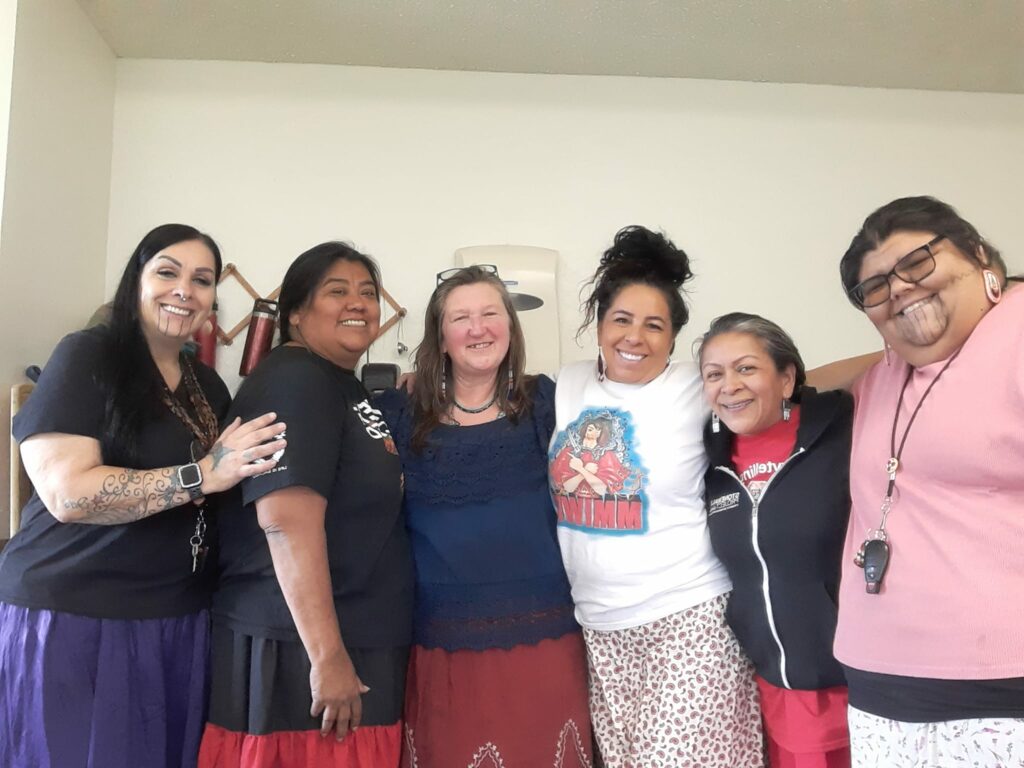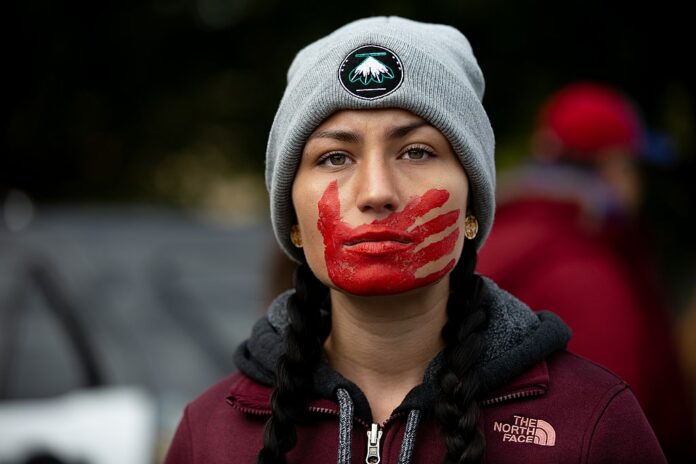Another epidemic is unfolding. Not a viral disease, but an outbreak that is nonetheless a real sickness killing women in the community.
The trending hashtag to bring awareness to Missing and Murdered Indigenous Women [#MMIW] really only scratches the surface of a bloody phenomenon.
Indigenous women are violently killed at a rate of more than six to 10 times the national average. This shocking statistic is nothing new. Rape and murder have been a fixture of the Native American experience ever since European colonizers arrived.
In each year of his first term, President Joe Biden has issued public statements recognizing May 5 as Missing or Murdered Indigenous Persons Awareness Day. The recognition from the highest office in the land is bolstered by the Not Invisible Act, a bill passed in 2020 which establishes an advisory commission of survivors and family members to address missing and murdered Native Americans.
Now, the North Coast’s Rep. Jared Huffman, along with two other congresspersons, has introduced a resolution calling for the permanent designation of May 5 as the National Day of Awareness for Missing and Murdered Indigenous Women and Girls.
Educating on Genocide
Rose Hammock is an advocate and education specialist whose purpose is to bring broad awareness to the plight of Indigenous communities, in part through the local education non-profit Redbud Resource Group.
Last November, the North Bay Bohemian profiled the nonprofit and its work increasing public awareness of the California Genocide of Indigenous People. During an interview for that article, this journalist discussed MMIW with Hammock and her colleagues.
This article is informed by that conversation, as well as an interview with Hammock conducted for the podcast series, Sonoma County: A Community Portrait, hosted by community journalist Cincinnatus Hibbard.
In case the reader is unfamiliar with the concept of an ongoing genocide, it is vital to start with the understanding that Native Americans are not a thing of the past; they live among us still.
To acknowledge Native people in the present tense is to help an essential segment of the population be seen and feel a part of the whole. This acknowledgement is meant for them to feel equal in importance to the white residents of the county whose colonizing predecessors evicted, raped and slaughtered their way through the fecund hills to make way for a rich agricultural tradition.
“A lot of the times, Native people are talked about in the past tense; ‘Native people used to weave baskets, Native people used to know how to hunt,’” Hammock told Hibbard during the podcast, published in February. “A lot of us still do these things today, and we have a lot of teachers that are really fighting to keep these things in practice for us.”
In short, Native culture, art and people are very much alive and active.


#MMIW
The hashtag #MMIW is a tool to raise awareness of a brutal truth that few fully appreciate.
The statistics are stark. As of 2016, there were 5,712 reports of missing or murdered women, girls and two-spirit people, according to the National Crime Information Center. (Two-spirit is a term used by some Native communities to describe those who do not fit within the male/female gender binary.)
Given what is known about the effects of violence on victims and the culture of shame that often prevents reporting of sexual violence, the real numbers are likely much higher. Yet when a woman goes missing from a Native community, the official response is very different from when women of other races disappear.
“People like Gabby Petito and Laci Peterson [are] national news,” said Hammock, referring to two recent high profile missing person cases. “[T]hese are both white women, [while] our people can go missing for four or five years without getting any attention.”
The #MMIW hashtag allows social campaigns to raise awareness of a problem that many do not know exists. Whether it be images for social media posts—like the appropriately unsettling image of red hands painted across the face of an Native woman which has become a hallmark of the #MMIW movement—or for spreading the word about upcoming events and marches, the hashtag has a catalyzing effect for activists and community members.
“People in our community as well, not all of Native people, are aware of these different issues that may be going on, so it’s a way that we can educate our own people but also educate the public and bring awareness in those ways,” said Hammock.
While geographically remote, impoverished populations will always be more prone to suffer and commit violence, the phenomenon of disproportionate killings of Indigenous women is also present in urban areas.
“A lot of the [Native] community people live in towns and cities,” said Hammock, noting that New York City and Sacramento are among the urban areas with significant populations of Native people.
Due to the dearth of active law enforcement investigation and evidence collection, it is impossible to say exactly who perpetrates these crimes. Yet many in Native communities believe that outsiders with knowledge of community activities are most likely to be in the position to stalk and abduct vulnerable people from Native lands. Service workers returning regularly to the area may also know that any official investigation of a crime is unlikely, sources noted.
Resources
Perhaps the most important action the reader can take is to educate themselves on contemporary lives of Native Americans. Many a Californian can name the casinos on Native American land in their vicinity, but how many can also name the tribes that own those casinos?
Those same tribes are on whose ancestral lands the surrounding towns were built when Native people were cleared out by means too graphic to recount here.
The resources listed below exist to help North Bay residents honor the women, girls, boys, men and all Natives who have suffered invisibility.
Listen – Sonoma County: A Community Portrait, interview with Rose Hammock
Watch – Somebody’s Daughter film (www.somebodysdaughter.com)
Read – We Are Still Here! Native American Truths Everyone Should Know by Traci Sorell
Learn – California Indian Museum and Cultural Center (www.cimcc.org), Redbud Resource Group (www.redbudresourcegroup.org) and Sovereign Bodies Institute (www.sovereign-bodies.org)
[EDITOR’S NOTE: Due to an error introduced in the editing process, paragraph 14 of this story previously misrepresented the number of missing and murdered Indigenous women, girls and two-spirit people.]












Thank you , ad so many Native Americans are unaware of the killings, genocide, of our young and elderly of all Native Nations as we stand as one . May Grandfather touch the lives of all Nations.
To “Natasha Obrien”: Your post is inappropriate (spam) and disrespectful. I hope no one takes you up on “earning 99000 bucks a month”
To “Natasha Obrien”: Your post is inappropriate (spam) and disrespectful. I hope no one takes you up on “earning 99000 bucks a month”